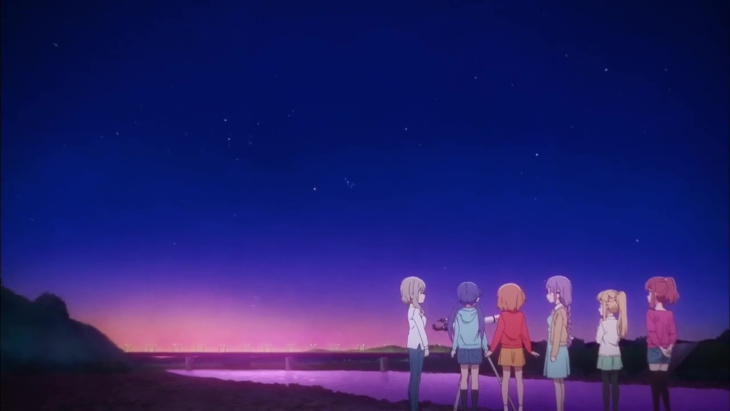
“It was fun getting to work in a team with people from completely different fields.”
Koisuru Asteroid is a tricky show to discuss, because it falls into two subgenres that I’m not particularly keen on, cute-girls-doing-cute-things and 4-koma adaptations specifically. This isn’t exactly an unprecedented combination either. Many of the anime from the past 15 years featuring the club antics of cute girls have been based upon 4-panel gag series, and, given the loose structuring of those 4-koma titles, it’s hardly surprising to find the genres go hand in hand. Given my preference for more focused and narrative oriented stories, it also makes sense I wouldn’t be keen on those less structured moe titles. However, I was willing to give Koisuru Asteroid a shot given its potential to be informative regarding astronomy and geology. Ultimately, I can’t say that I got much out of it though. The occasional factoids are sprinkled throughout, but they pass by so quickly that they leave little impact and are unlikely to be retained by the viewer, and the narrative is too loose to carry the interest on its own. For fans of lighter moe stories, Koisuru Asteroid might scratch that itch while offering a modicum of scientific information, but for anyone seeking something more substantial, they might be better served by just watching NOVA documentaries.
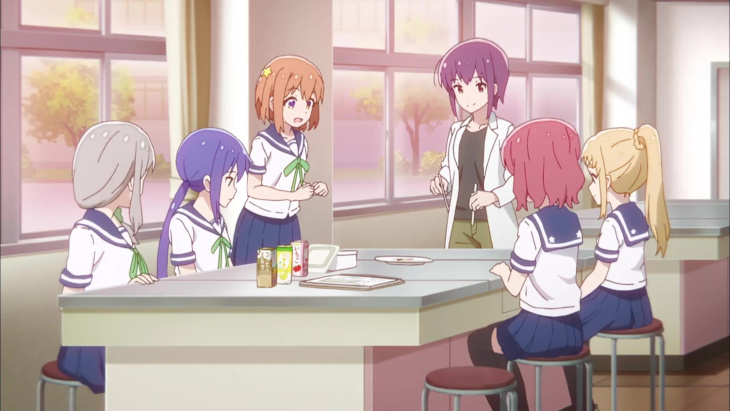
Koisuru Asteroid follows two high school girls, Mira Konohata and Ao Manaka, as they join their school’s Earth Sciences club. The club itself is a recent creation formed by combining the Geology and Astronomy clubs as they were low on membership and faced disbandment otherwise. Because of a chance encounter with one another in the past, Mira and Ao have a dream of discovering an asteroid together and naming it after Ao (There is already a star named “Mira”). The club then proceeds to work together to study elements of astronomy and geology. At a glance, we have all the necessary components needed to have an engaging story about teenage girls passionately pursuing scientific goals, but the execution never has the same sense of drive or energy that our leads exhibit. Moments of scientific insight are relatively few and far between in this series. It might have benefited by borrowing a page from Doga Kobo’s previous series How Heavy Are the Dumbbells You Lift?. Dumbbell had a habit of interrupting the narrative to allow the characters the opportunity to directly exposit about various workout techniques to the audience. By employing humor and keeping the tone light, the show was able to be informative without breaking the flow of the proceedings. And when compared to a more scientifically oriented anime, specifically last year’s A Place Further Than the Universe, Koisuru Asteroid still falls notably short. The characters, tone, story and instructional quality all fail to match up in such a comparison. The problem lies in the fact that Koisuru Asteroid feels like a combination of various half-measures, and, as a result, it never excels at any one element.
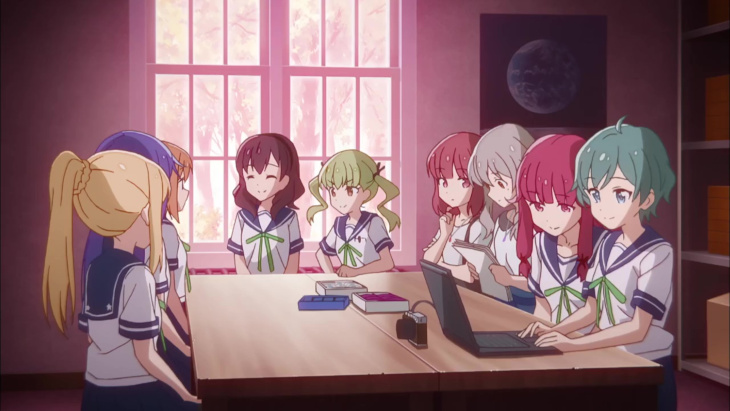
The characters themselves are fine and moderately varied, but they rarely extend beyond one or two gimmicks. Mira is boisterous and energetic. Ao is quiet and earnest. The club leader Mari is aloof and wants to be an astronaut, so on and so forth. None of these characters reach the point where they’re annoying, though one of the girls introduced later on is interested in fortune telling and the healing powers of stones and such nonsense, which I consider an unbecoming trait. Still, there was never a point where I said to myself, “I don’t like these characters.” However, I did reach the point where I didn’t really care where the show was going next. By the time I’d gotten to episode 9, I recognized I was primarily sticking with the show solely because I had hung around through the first two-thirds, so I may as well finish it. It’s all very pat. The cast needs to prepare for or carry out an activity. They do so. The show moves on. Cultural festivals, club trips, special events. There were opportunities to develop stakes or be informative, but the narrative just sort of breezed through them without a clear sense of drive.
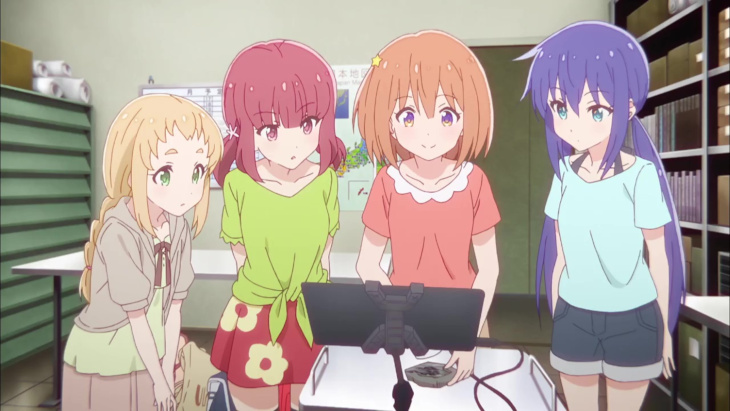
The production itself is solid enough. This is pretty standard for moe school-club fare, but there are some notable highlights. While the character designs and animation are relatively basic, they don’t detract from the execution, and the backgrounds are nicely detailed, especially in instances where they’re showing off rock formations or astrological equipment. Doga Kobo has proven itself to be a solid B-list studio over the past few years (I mean that as a compliment), and, while I’m not a huge fan of the end result, I certainly wouldn’t argue they dropped the ball here. In the end, I’d say the production quality was a lot like the show itself. It did its job, but wasn’t anything to write home about.
Before I wrap up, a few Notes and Nitpicks:
- So, the final episode featured a montage of stills from throughout the season that lasted for a few minutes and was accompanied by music. On one hand, this does seem rather lazy, but, on the other hand, it saved me a bunch of time when I needed to get some screengrabs for the review.
- As an example of the limited stakes that the show establishes, for several episodes it is clear something is eating away at Ao. After a while, the problem she is grappling with is revealed at the end of an episode… and is solved in the first five minutes of the following episode. Captivating stuff.
- For those who aren’t familiar with 4-koma manga, the term 4-koma translates to 4-panels and they’re roughly comparable to Comic Strips in the west. I’ve never actually read a traditional 4-koma series, but, for those who are fans of webcomics, early Megatokyo comics were based around that format. I guess Ctrl+Alt+Del used that format as well. In my experience, 4-koma adaptations work best when they’re primarily focused on the comedy, as that can carry the proceedings when the narrative isn’t up to the task.
- I mentioned in my original First Impressions review for this title that I wasn’t sure to what extent it would fall in the yuri genre. It makes the occasional allusion to female-female relationships, but it keeps everything thoroughly platonic.

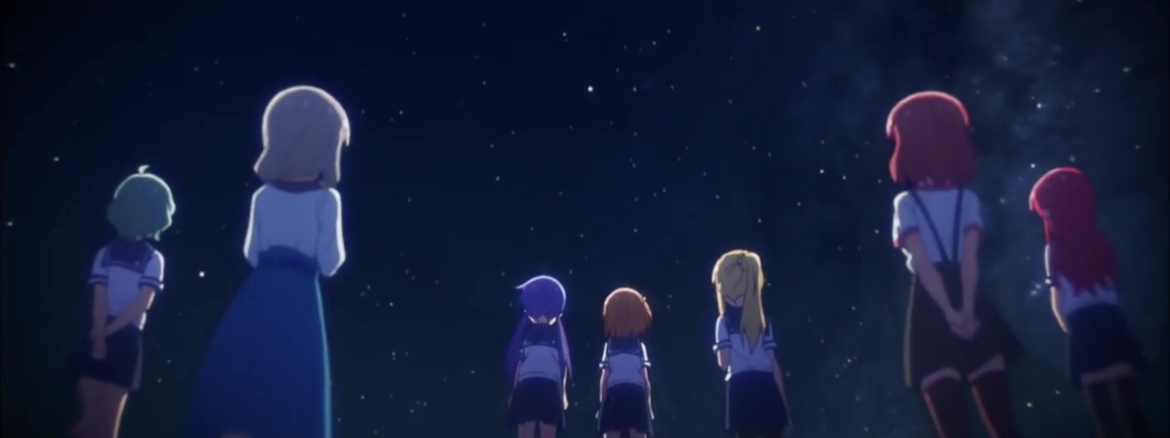


Add comment